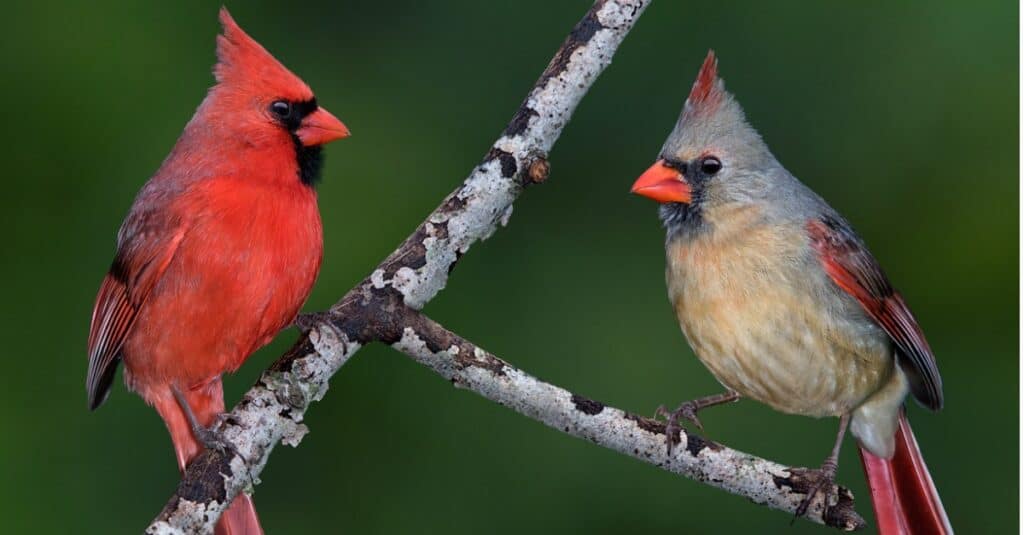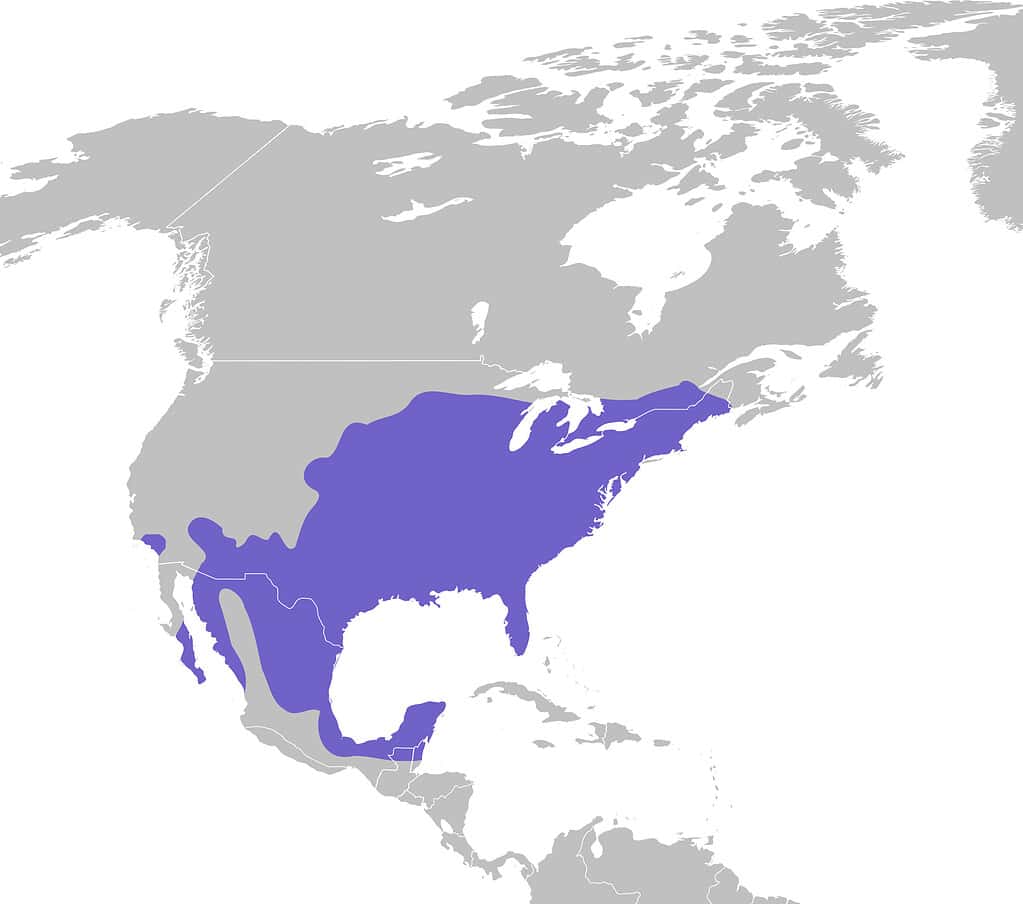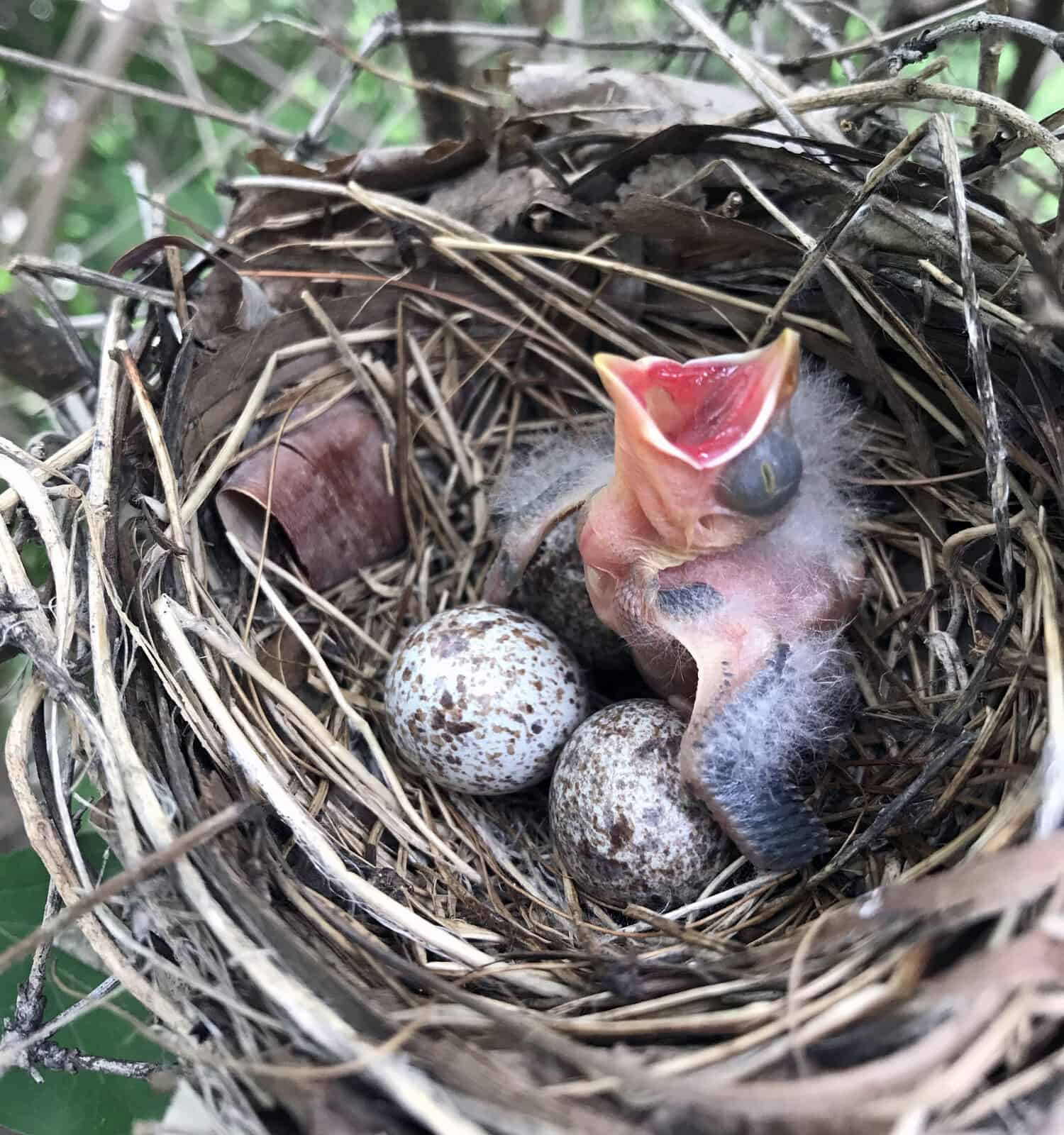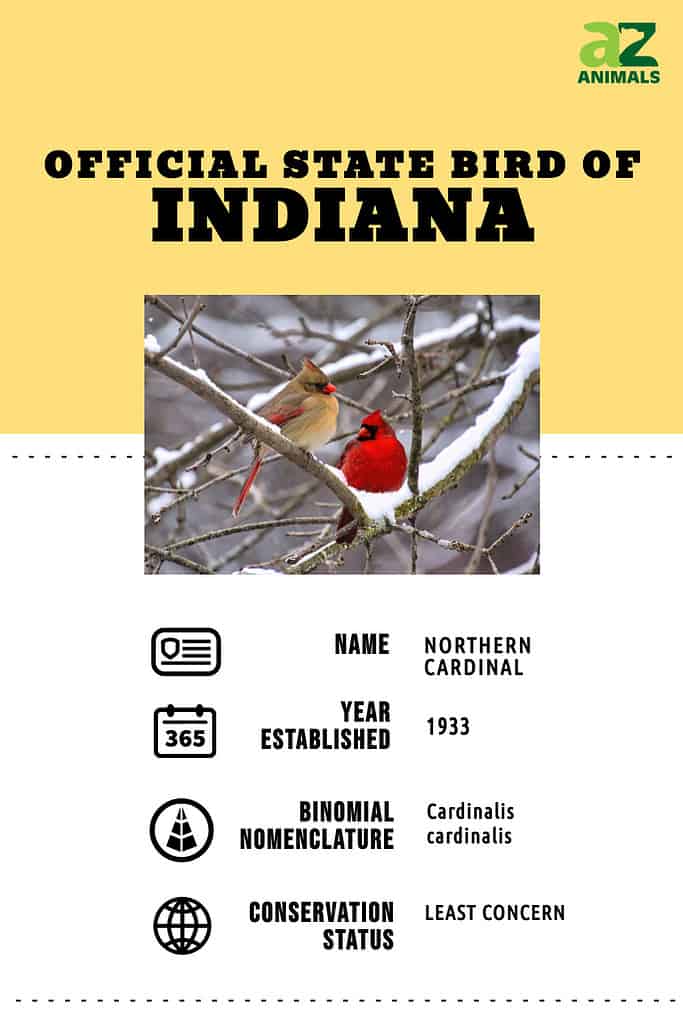The official Indiana state bird is the Northern Cardinal (Cardinalis cardinalis).
Indiana declared the northern cardinal its official state bird in 1933. Also known colloquially as the cardinal, common cardinal, red cardinal, and redbird, the species was named for the male’s brilliant red plumage, which brought to mind the distinctive red robes and caps worn by the cardinals of the Roman Catholic Church. A total of seven states have named it as their state bird — more than any other species! Read on to find out more about this iconic bird and what makes it so popular in Indiana and beyond.
What Do Northern Cardinals Look and Sound Like?

It’s easy to tell apart adult male (left) and female (right) cardinals — just look for the red!
©Cathy Keifer/Shutterstock.com
Northern cardinals are medium-sized songbirds that sport a prominent head crest. Average body length measures 8.3-9.1 inches (21-23 cm), with a wingspan of 9.8-12.2 inches (25-31 cm). The average weight is 1.5-1.7 ounces (42-48 g).
Males and females are similar in size and shape, but dramatically different in color. The adult males are famous for the all-over bright red plumage, accessorized with an orange-red bill and black face mask. Females, in contrast, exhibit less conspicuous coloration. They have a pale brown body color tinged with warm reddish highlights on the wings, tail, and crest. Like the males, they also have a black face mask and orange-red bill. Juveniles, meanwhile, look similar to adult females, but with a grayish bill.
Unusual for songbirds, both male and female northern cardinals sing. They even sing duets together! They chirp bright cheerful strings of clear whistles in 2-3 second repetitions. These phrases are often described as sounding like cheer, cheer, cheer, or birdie, birdie, birdie. In addition, you’ll commonly hear their distinctive alarm call, which sounds like a sharp metallic chip. Northern cardinals are very territorial and use this call often!
Where Do Northern Cardinals Live?

The northern cardinal has a wide-spanning range that includes most of the Eastern, Central, and Southern United States, along with parts of southeastern Canada to the north and Mexico and northern Central America to the south.
As is fitting for the official state bird, northern cardinals range throughout Indiana. The largest population, however, is found in the central part of the state. Cardinals can utilize a variety of habitats that include areas of dense shrubby areas such as forest edges, overgrown fields, and marshy thickets. They have also adapted well to human-created habitats, including woodlots, hedgerows, gardens, and parks. In fact, they are now one of the most commonly spotted “backyard birds” in towns and suburbs across their range. Furthermore, it is a non-migratory species, with a year-round presence that brightens up even the drabbest winter days. This is surely a big reason for its popularity as a state bird!
When Is The Northern Cardinal’s Breeding Season in Indiana?

Northern cardinal eggs are whitish with brown or grey speckles, while hatchlings are born with eyes closed and mostly naked except for some tufts of greyish down.
©Tara Melinda/Shutterstock.com
In Indiana, the northern cardinal breeding season lasts all the way from early spring into early autumn. Cardinals form strong pair bonds, with extended courtship and mating rituals that include the male feeding the female beak-to-beak. The females typically start building cup nests in late March or early April. They prefer nesting in low, dense foliage, such as shrub and vine tangles. Females lay 2-5 speckled eggs, which they incubate for 11-13 days. Both males and females then raise the young together. Northern cardinals may raise multiple broods in one season; eggs have been found in nests in Indiana as late as September.
What Do Northern Cardinals Eat?

Cardinals love sunflower and safflower seeds, which they can easily crack open with their strong beaks.
©Ami Parikh/Shutterstock.com
Northern cardinals are seed eaters and are especially fond of sunflower and safflower seeds. They also eat berries and other small fruits. Additionally, they supplement their diet with small arthropods; this is also what is fed to the young. If you want to attract these vibrant birds to your yard, try offering their favorite seeds in feeders designed for larger songbirds such as hoppers, trays, and platforms, as well as an overall bird-friendly habitat.
Conclusion
The northern cardinal has been the official state bird of Indiana since 1933. Six other states also claim it as a state symbol, making it the most popular state bird in the United States. A widespread bird common across its range, it is easily identified by its cheerful song, perky head crest, and of course, the male’s iconic bright red plumage!

The photo featured at the top of this post is © iStock.com/Lynnae_Lowe
Thank you for reading! Have some feedback for us? Contact the AZ Animals editorial team.







